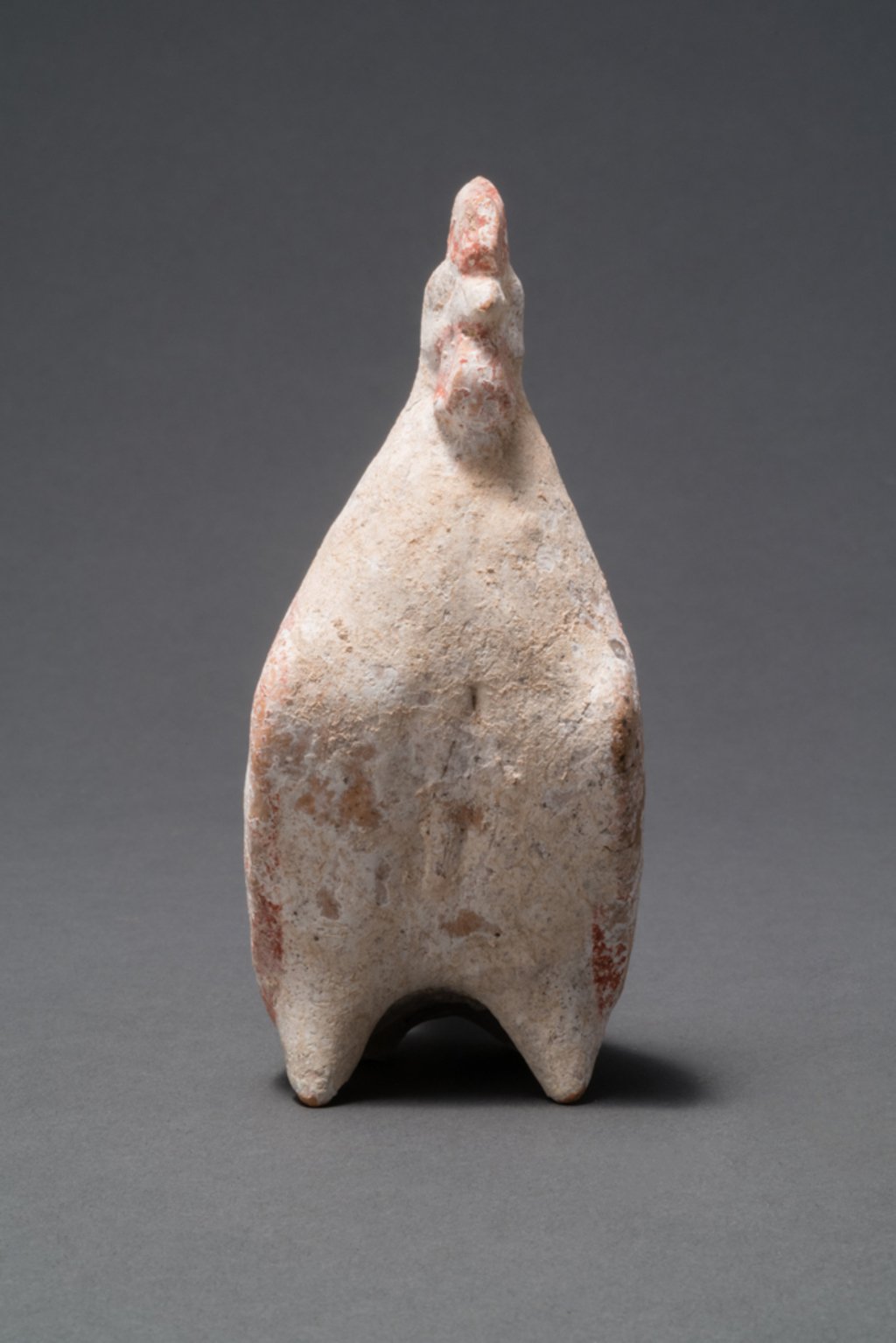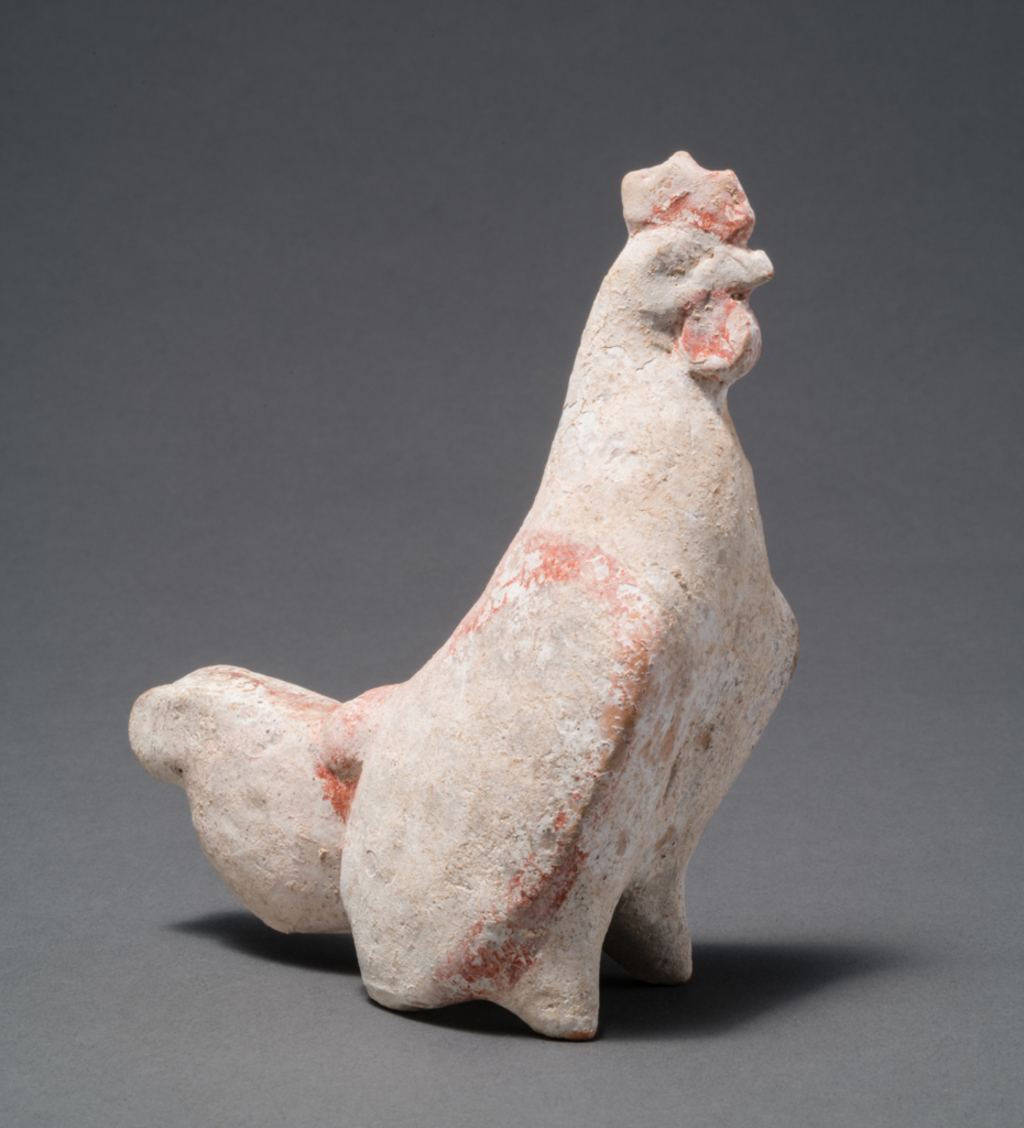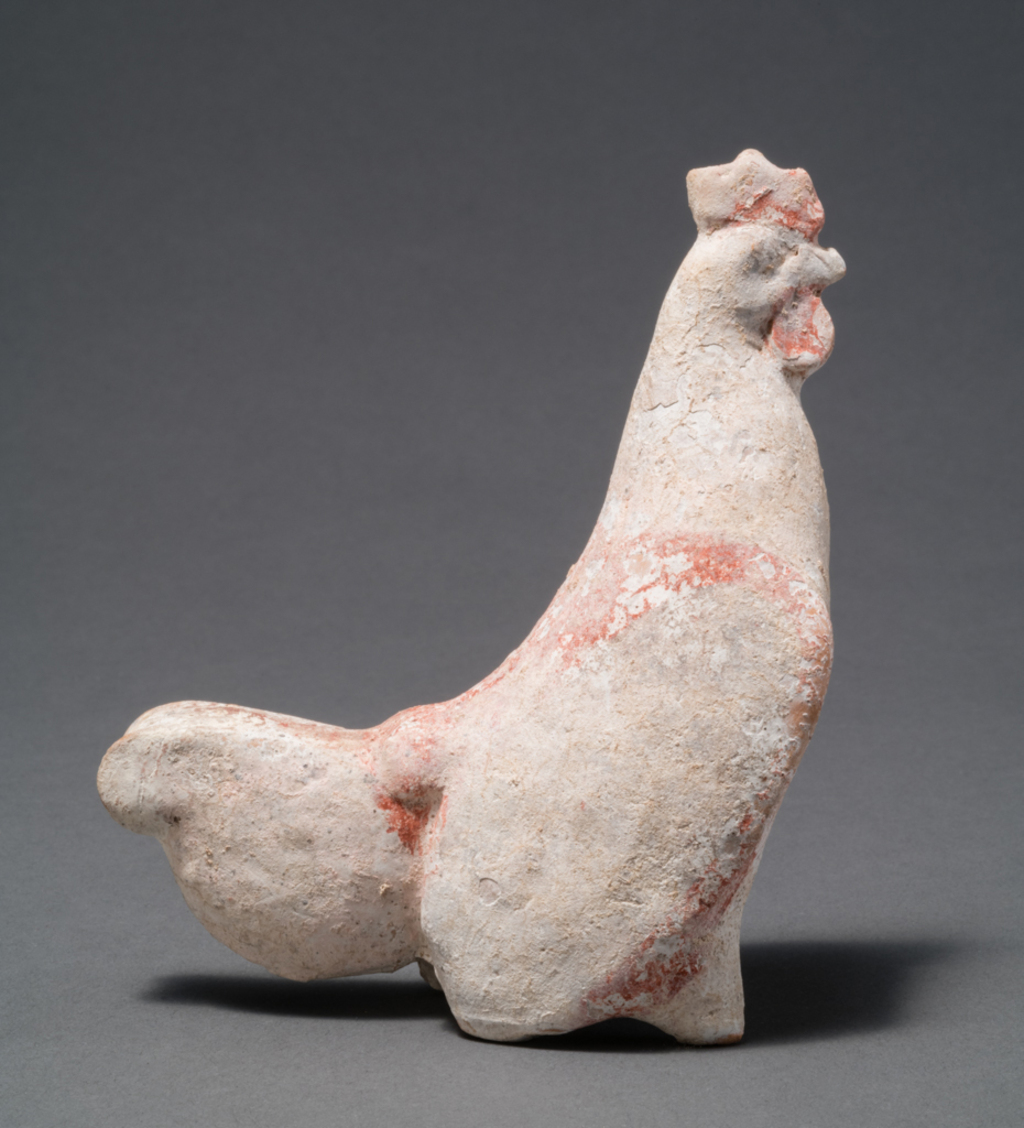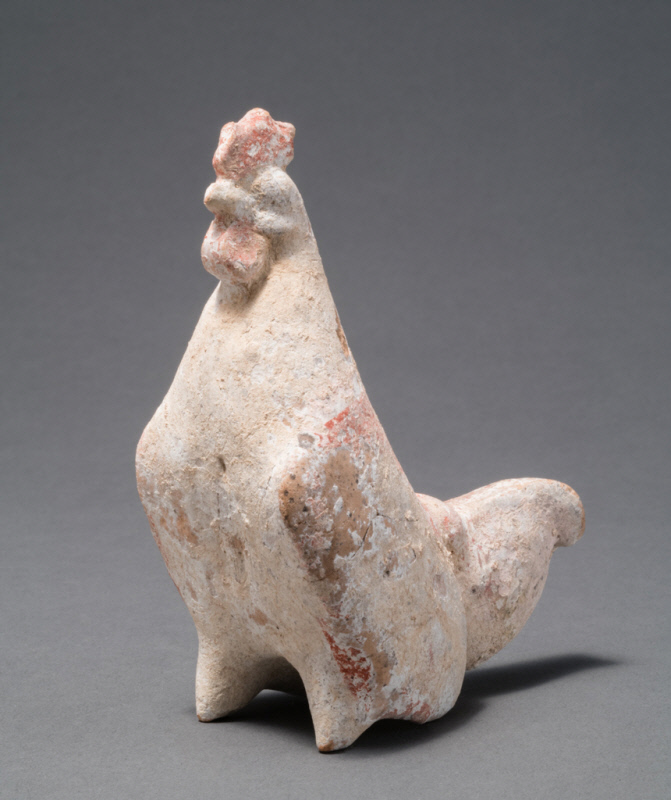Ancient Greek
Rooster, 5th century BCE
Terracotta
4 ½ × 2 × 3 7/8 in. (11.4 × 5.1 × 9.8 cm)
3-D Object/Sculpture
Bequest of Jermayne MacAgy
1964-177 McA
Photo: Paul Hester
Image 2: Photo: Paul Hester
Image 3: Photo: Paul Hester
Image 4: Photo: Paul Hester
Image 5: Photo: Paul Hester
Learn More
This hollow terracotta figure representing a rooster, also known as a cockerel, was made using a two-part mold with the two cylindrical legs made by hand and added later. Stylistically, it was most likely produced during the 5th century BCE in either Rhodes, an eastern Greek island in the southern Aegean, or Boeotia, on mainland Greece, both of which were known production centers of animal figures. Roosters were common in Greek iconography and were understood in varying contexts, from gifts of love to decoration on shields. Similarly, roosters were associated with deities and votive gifts in both animal and object form. Terracotta representations of the animal have been found in sanctuaries, possibly with a votive function. This example, however, has no known archaeological provenience to clarify its use.
Related collections and exhibitions





